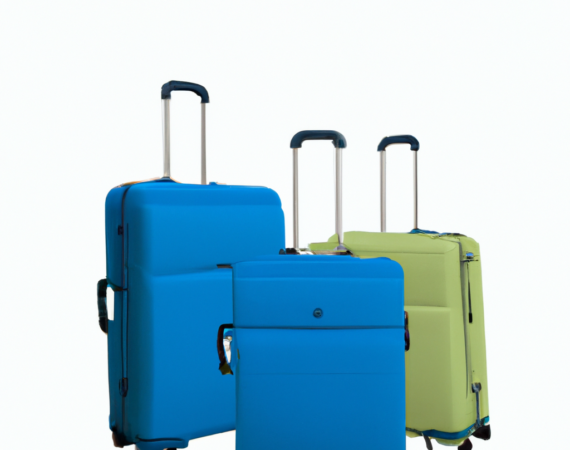Bag It Right: Unveiling the Secrets of Well-Organized Luggage Bags
Packing for a trip can be an exciting yet daunting task. The way you organize your luggage bag can greatly impact the ease and enjoyment of your journey. In this guide, we’ll unravel the secrets to perfectly organized luggage bags that not only save you time and hassle but also enhance your overall travel experience.
Choosing the Right Luggage Bag
When it comes to creating a well-organized travel bag, it all begins with selecting the right luggage. Consider the nature of your trip, the duration, and your personal preferences. From duffel bags for quick getaways to spacious suitcases for extended vacations, understanding the purpose of each bag type ensures you start off on the right foot.
Packing Essentials: The Foundation of an Organized Bag
Before you start loading your bag, create a comprehensive packing checklist. Categorize items such as clothing, toiletries, electronics, and accessories. This not only prevents you from forgetting essentials but also streamlines the packing process. Invest in travel-sized containers for your toiletries, saving both space and complying with airport regulations.
Rolling vs. Folding: The Great Clothing Debate
The age-old debate of rolling versus folding clothes is a pivotal consideration for organized packing. Rolling conserves space and minimizes wrinkles, while folding maintains the crispness of formal attire. Striking a balance between the two methods optimizes your bag’s capacity while keeping your clothes presentable.
Utilizing Compartments and Pouches
Modern luggage bags often come equipped with various compartments and pouches. Take advantage of these built-in features to organize your belongings. Allocate specific sections for shoes, undergarments, and accessories. Pouches are excellent for housing small items that might otherwise get lost in the bag’s depths.
Maximizing Space with Strategic Layering
Layering your clothes strategically is a game-changer for efficient packing. Place bulkier items at the bottom and delicate fabrics on top. Use clothing items as padding for fragile souvenirs or electronics. This not only maximizes space but also protects your items during transit.
Shoes and Dirty Laundry: Isolation Techniques
Shoes can be problematic in terms of cleanliness and odor. Pack them in shoe bags to prevent them from soiling your clean clothes. To keep dirty laundry separate, consider using a dedicated laundry bag. This simple step maintains the overall freshness of your luggage.
Tech and Documents: Safekeeping and Accessibility
In today’s digital age, our gadgets and documents are indispensable. Designate a compartment solely for your electronics, complete with cable organizers. Moreover, keep travel documents like passports and tickets easily accessible in an outer pocket. This ensures a smooth journey through security checkpoints.
Managing Weight and Avoiding Overpacking
It’s easy to fall into the trap of overpacking, leading to heavy bags and potential extra fees. Weigh your luggage before leaving to avoid surprises at the airport. Make conscious choices about what you truly need for your trip. Remember, versatility is key—mix and match outfits to minimize the number of items you bring.
Unpacking Wisely: Maintaining Organization on the Go
Staying organized doesn’t stop once you reach your destination. Keep items grouped together and compartmentalized throughout your trip. This makes unpacking and repacking a breeze, especially if you’re moving between multiple locations.
Adapting to Special Trips: Business, Adventure, and More
Different types of trips demand different packing strategies. For business trips, focus on wrinkle-resistant attire and proper accessories. Adventure seekers should prioritize sturdy and functional gear. Tailoring your packing approach to the trip’s nature ensures you’re prepared for any situation.
Long-Term Organization: Souvenirs and Mementos
As your travels unfold, you might accumulate souvenirs and mementos. While these tokens hold sentimental value, they can quickly clutter your living space. Designate a specific area in your luggage for these items, and be selective about what you bring back. This practice ensures your cherished memories remain organized.
Handling Unexpected Situations: Spills, Repacking, and Lost Items
Travel isn’t without its unexpected challenges. To handle spills, pack liquids in leak-proof containers and wrap them in plastic bags. If you need to repack due to sudden itinerary changes, refer back to your organized packing checklist for guidance. In the unfortunate event of lost items, having a detailed inventory can expedite recovery efforts.
Maintaining Bag Hygiene: Cleaning and Storage
After returning from your trip, don’t neglect your luggage bag’s hygiene. Give it a thorough cleaning to remove dirt and dust. Store your bag in a dry, cool place to prevent mildew. Taking care of your luggage ensures it’ll be ready for your next adventure.
Conclusion
Achieving a well-organized luggage bag is a skill that enhances the joy of travel. By carefully selecting your bag, creating packing checklists, and using smart techniques like rolling and layering, you’ll breeze through packing and unpacking. Whether you’re a frequent flyer or an occasional traveler, these strategies ensure your journeys are smoother and more enjoyable.
…
Read More




